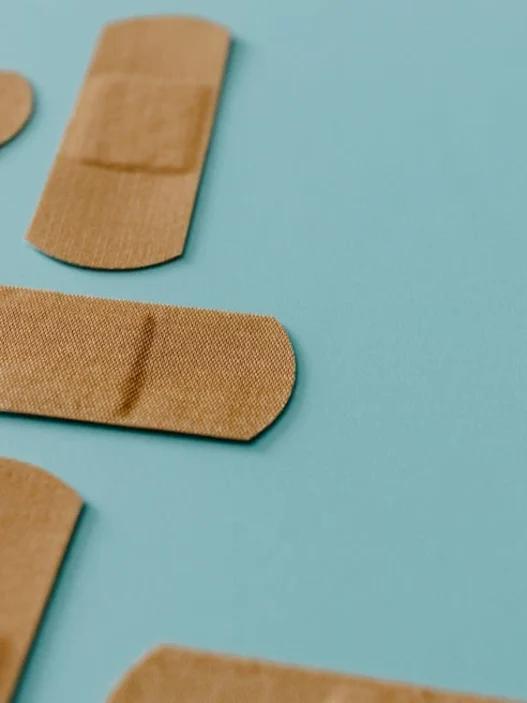0QU04JZ is a medical procedure in which a synthetic substitute is used to supplement a lumbar vertebra through a minimally invasive endoscopic approach. This treatment aims to help alleviate pain and improve stability in the lower back region.
Table of Contents:
- 🔎 Clinical Indication
- 📋 Preparation
- 📖 Methodology
- 🩹 Recovery
- 🚨 Complexity & Risk
- 🔀 Similar Procedures
🔎 Clinical Indication
Performing the procedure 0QU04JZ may be necessary to help address issues related to the lumbar spine, such as degenerative disc disease or spinal stenosis.
Patients may undergo this procedure to relieve pain and improve mobility in the lower back, often when conservative treatments like physical therapy or medications have not provided sufficient relief.
The percutaneous endoscopic approach allows for a minimally invasive procedure, resulting in shorter recovery times and potentially less post-operative pain compared to traditional open surgery.
📋 Preparation
Before undergoing the procedure 0QU04JZ (Supplement Lumbar Vertebra with Synthetic Substitute, Percutaneous Endoscopic Approach), patients will typically meet with their healthcare provider to discuss the risks and benefits. This consultation will also involve a physical examination to ensure the patient is a suitable candidate for the surgery.
In addition, patients may be required to undergo preoperative testing, such as blood work and imaging studies, to assess their overall health and help guide the surgical team during the procedure. These tests are crucial in determining the appropriate course of treatment and ensuring the best possible outcome for the patient.
Finally, patients will be given specific instructions to follow in the days leading up to the surgery, which may include restrictions on eating and drinking. It is important for patients to follow these guidelines closely to minimize the risk of complications during the procedure and promote a smooth recovery process.
📖 Methodology
During 0QU04JZ, a synthetic substitute is used to supplement a lumbar vertebra, specifically through a percutaneous endoscopic approach. This procedure involves inserting a small camera through a tiny incision in the skin to guide the placement of the synthetic material.
The percutaneous endoscopic approach allows for a minimally invasive surgery, resulting in smaller incisions, less scarring, and potentially quicker recovery times for the patient. The synthetic substitute is designed to mimic the function of a natural vertebra, providing stability and support to the spinal column.
Overall, 0QU04JZ aims to address issues such as vertebral fractures, degenerative disc disease, or other spinal conditions by using a synthetic material to support and strengthen the lumbar vertebrae. This procedure offers a less invasive alternative to traditional open surgeries, with potentially positive outcomes for patients seeking relief from spinal discomfort.
🩹 Recovery
After undergoing a Supplement Lumbar Vertebra with Synthetic Substitute through a Percutaneous Endoscopic Approach, the patient will typically experience some pain and discomfort in the area. This is normal and can be managed with pain medication prescribed by the doctor.
In order to aid in the recovery process, it is important for the patient to follow any post-operative instructions provided by their healthcare team. This may include limiting physical activity, avoiding heavy lifting, and attending follow-up appointments to monitor progress.
Over time, the body will begin to heal and the patient should start to experience relief from their previous symptoms. It is important for the patient to be patient with the recovery process and to communicate any concerns or changes in their condition to their medical provider.
🚨 Complexity & Risk
Performing 0QU04JZ, which involves supplementing a lumbar vertebra with a synthetic substitute using a percutaneous endoscopic approach, can be highly complex due to the precision required in navigating the spine and ensuring proper placement of the substitute.
Patients undergoing this procedure may face potential risks such as nerve damage, infection, bleeding, or damage to surrounding structures in the spine. It is essential for healthcare professionals to have specialized training and experience to minimize these risks and ensure successful outcomes for patients.
🔀 Similar Procedures
Another medical procedure similar to Supplement Lumbar Vertebra with Synthetic Substitute, Percutaneous Endoscopic Approach is lumbar spinal fusion. Both procedures involve treating conditions such as disc degeneration or spinal instability by stabilizing the affected area of the spine.
During lumbar spinal fusion, bone grafts or synthetic materials are used to promote bone growth between two or more vertebrae, creating a solid bridge of bone. This helps to stabilize the spine and relieve pressure on nerves, similar to the goals of the percutaneous endoscopic approach.
While Supplement Lumbar Vertebra with Synthetic Substitute, Percutaneous Endoscopic Approach is minimally invasive and often done on an outpatient basis, lumbar spinal fusion may require a longer hospital stay and more extensive recovery time. Both procedures aim to improve spinal function and reduce pain for patients with spinal conditions.





